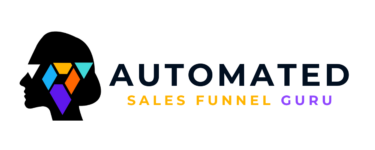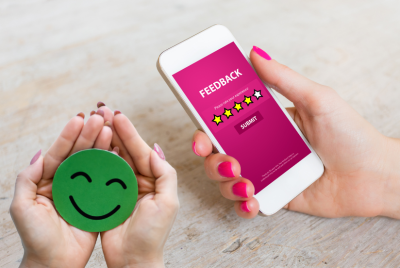Using Webinars to Automate Your Coaching or Course Enrollment Process
As a funnel strategist and automation expert, I understand the importance of streamlining and optimizing coaching or course enrollment processes. Automation plays a vital role in efficiently managing the registration, communication, and engagement aspects of these processes. One effective tool that can significantly enhance these processes is webinars.
In this article, I will delve into the benefits of using webinars and provide helpful suggestions on how to leverage them to automate your coaching or course enrollment process effectively.
Understanding Webinars
Webinars, short for web-based seminars, are online events that allow individuals or organizations to conduct presentations, workshops, or training sessions remotely. They utilize video conferencing technology to connect presenters with participants in real-time. Webinars serve as a powerful platform to deliver valuable content, interact with attendees, and generate leads. By harnessing the capabilities of webinars, you can automate various aspects of your coaching or course enrollment process while delivering a personalized and engaging experience to your audience.
Automating the Enrollment Process
To automate your coaching or course enrollment process using webinars, it is essential to implement a series of streamlined steps. Here’s how you can do it:
- Setting up a webinar registration page: Create a dedicated landing page that allows interested individuals to register for your webinar. Include a clear and compelling call-to-action, highlighting the benefits of attending.
- Integrating an email marketing system for automated follow-ups: Connect your webinar registration page to an email marketing system such as Keap or ConvertKit. Automate a series of follow-up emails to nurture leads, provide additional information, and remind participants about the upcoming webinar.
- Creating an automated confirmation and reminder system: Once a participant registers for your webinar, send them an automated confirmation email containing the webinar details. Set up reminder emails to ensure participants don’t miss the event.
- Using webinar software to manage registrations and attendance: Choose a reliable webinar software such as Zoom, GoToWebinar, or WebinarNinja to streamline the registration process, manage attendee lists, and track attendance during the live sessions.
Leveraging Webinars for Coaching
Webinars offer a unique opportunity to deliver coaching sessions remotely, reaching a broader audience while automating the process.
Here’s how you can leverage webinars for coaching:
- Conducting live coaching sessions through webinars: Schedule live coaching sessions and deliver them through webinars. This allows you to interact with participants in real-time, answer their questions, and provide personalized guidance.
- Sharing valuable content and insights: Prepare informative presentations that offer valuable insights, actionable tips, and strategies relevant to your coaching niche. Engage participants by sharing your expertise and helping them overcome challenges.
- Interacting with participants through Q&A sessions and polls: Encourage audience engagement by conducting interactive Q&A sessions and polls during the webinar. Address participant queries, gather feedback, and foster a sense of community among attendees.
- Providing recorded webinar sessions for on-demand access: Record your coaching webinars and make them available for on-demand access. This enables participants who couldn’t attend the live sessions to benefit from your coaching content at their convenience.
Optimizing Conversions Through Webinars
Webinars are not only effective for coaching but also for boosting conversions and generating sales. Here’s how you can optimize conversions through webinars:
- Designing compelling webinar presentations: Create visually appealing slides with captivating content. Use high-quality images, charts, and graphs to enhance understanding and engage participants throughout the webinar.
- Incorporating persuasive call-to-actions (CTAs): Strategically place compelling CTAs within your webinar presentation, encouraging participants to take the desired action, such as signing up for your coaching program or purchasing your course.
- Using scarcity and urgency techniques: Offer limited-time promotions, bonuses, or discounts exclusively to webinar attendees. Create a sense of urgency, compelling participants to take immediate action and make a purchase.
- Segmenting and targeting specific audience groups: Tailor your webinar content and marketing efforts to specific audience segments. By understanding their needs and pain points, you can deliver personalized messages that resonate and drive conversions.
Increasing Webinar Attendance and Engagement
To maximize the impact of your webinars, it’s crucial to ensure high attendance and active engagement. Here are some strategies to increase webinar attendance and engagement:
- Promoting webinars through various channels: Leverage your existing online presence, including your website, blog, social media profiles, and email list, to promote your webinars. Use compelling copy, visuals, and testimonials to attract potential participants.
- Creating engaging pre-webinar content: Build anticipation and interest by sharing valuable content related to your webinar topic before the event. This can include blog posts, videos, or teasers that provide a glimpse into the knowledge participants can gain by attending.
- Encouraging social sharing and referrals: Implement social sharing buttons and referral programs to incentivize participants to spread the word about your webinar. Offer rewards or exclusive content for participants who successfully refer others to join.
- Implementing post-webinar surveys and feedback loops: Gather feedback from participants after each webinar to gain insights into their experience. Use this feedback to improve future webinars and identify areas where you can further automate and optimize your coaching or course enrollment process.
Tracking and Analyzing Webinar Performance
To continuously improve your coaching or course enrollment process, it’s important to track and analyze the performance of your webinars. Here’s what you should focus on:
- Monitoring attendee engagement and drop-off rates: Track attendee engagement metrics such as chat participation, poll responses, and questions asked. Identify patterns and areas where participants lose interest or drop off to refine your content and delivery.
- Analyzing conversion rates and sales generated: Measure the effectiveness of your webinars by analyzing the conversion rates and sales generated from each event. Identify the most successful strategies and replicate them in future webinars.
- Gathering feedback and testimonials from participants: Collect feedback and testimonials from participants to understand their perspective and gauge the impact of your coaching or course. Use these testimonials to build credibility and attract future attendees.Making data-driven improvements to future webinars: Utilize the insights gathered from tracking and analysis to make data-driven improvements to your future webinars. Experiment with different approaches, content formats, and promotional strategies to optimize results.
Overcoming Common Webinar Challenges
While webinars offer numerous benefits, they can also present challenges. Here are some common challenges and how to overcome them:
- Technical issues and troubleshooting: Prepare in advance by familiarizing yourself with the webinar software and conducting technical tests. Have troubleshooting steps ready to address potential issues promptly.
- Dealing with low attendance or engagement: Continuously improve your webinar promotion strategies to increase attendance. Engage participants actively throughout the webinar by encouraging questions, discussions, and interaction.
- Managing time zones and scheduling conflicts: Offer multiple time options for your webinars to accommodate participants from different time zones. Record the sessions for those who cannot attend live and provide access to the recording.
- Handling difficult participants or questions: Maintain a professional and calm demeanor when dealing with difficult participants or challenging questions. Be prepared with diplomatic and informative responses to maintain a positive atmosphere.
Conclusion
By utilizing webinars in your coaching or course enrollment process, you can automate key aspects while delivering valuable content and engaging experiences to your audience. Webinars offer opportunities for live coaching, optimizing conversions, increasing attendance, and tracking performance. Overcome challenges by being prepared and responsive. Embrace the power of webinars to automate your coaching or course enrollment process and achieve greater reach and impact.
FAQs
Q: Are webinars suitable for all types of coaching or courses?
A: Yes, webinars can be adapted to various coaching niches and course topics. The key is to tailor the content and delivery to meet the specific needs and preferences of your target audience.
Q: How long should a webinar be?
A: The ideal duration of a webinar depends on the topic and audience. Generally, aim for 45 minutes to an hour, including time for Q&A and engagement activities.
Q: Can I automate the post-webinar follow-up process?
A: Absolutely! Set up automated email sequences to send follow-up messages, additional resources, and offers to participants after the webinar to nurture leads and drive conversions.
Q: How can I ensure high attendance for my webinars?
A: Promote your webinars through various channels, create engaging pre-webinar content, and offer incentives for participants to share and refer others. Also, send reminder emails leading up to the event.
Q: Is it necessary to use webinar software, or can I conduct webinars using other platforms?
A: While it’s possible to conduct webinars using alternative platforms like video conferencing tools, dedicated webinar software offers features specifically designed for managing registrations, attendee tracking, engagement, and analytics, making it highly recommended for a streamlined experience.
Remember, incorporating webinars into your coaching or course enrollment process can revolutionize the way you engage with your audience, automate key steps, and drive conversions. Embrace the power of webinars and elevate your coaching or course offerings to new heights.




